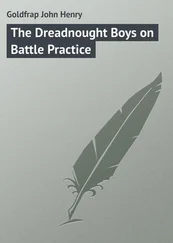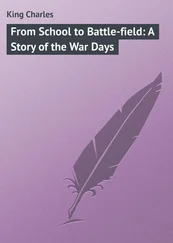John Frost - The Indian - On the Battle-Field and in the Wigwam
Здесь есть возможность читать онлайн «John Frost - The Indian - On the Battle-Field and in the Wigwam» — ознакомительный отрывок электронной книги совершенно бесплатно, а после прочтения отрывка купить полную версию. В некоторых случаях можно слушать аудио, скачать через торрент в формате fb2 и присутствует краткое содержание. Жанр: foreign_antique, foreign_prose, на английском языке. Описание произведения, (предисловие) а так же отзывы посетителей доступны на портале библиотеки ЛибКат.
- Название:The Indian: On the Battle-Field and in the Wigwam
- Автор:
- Жанр:
- Год:неизвестен
- ISBN:нет данных
- Рейтинг книги:5 / 5. Голосов: 1
-
Избранное:Добавить в избранное
- Отзывы:
-
Ваша оценка:
- 100
- 1
- 2
- 3
- 4
- 5
The Indian: On the Battle-Field and in the Wigwam: краткое содержание, описание и аннотация
Предлагаем к чтению аннотацию, описание, краткое содержание или предисловие (зависит от того, что написал сам автор книги «The Indian: On the Battle-Field and in the Wigwam»). Если вы не нашли необходимую информацию о книге — напишите в комментариях, мы постараемся отыскать её.
The Indian: On the Battle-Field and in the Wigwam — читать онлайн ознакомительный отрывок
Ниже представлен текст книги, разбитый по страницам. Система сохранения места последней прочитанной страницы, позволяет с удобством читать онлайн бесплатно книгу «The Indian: On the Battle-Field and in the Wigwam», без необходимости каждый раз заново искать на чём Вы остановились. Поставьте закладку, и сможете в любой момент перейти на страницу, на которой закончили чтение.
Интервал:
Закладка:
The Indians have several methods of attacking buffaloes. The most exciting as well as the most dangerous one is that in which they run round the herd for the purpose of destroying it. The hunters, well-mounted with bows and lances, divide themselves into two columns, take opposite directions, and at the distance of a mile or two, draw gradually around the herd, and having formed a circle, close upon their prey at regular distance, On seeing the danger, the herd run in the opposite direction, where they are met by the other party. The circle is gradually closed, and the parties unite. By this time, the buffaloes are wheeling about in a crowded and confused mass, wounding and climbing upon each other. Then their destruction commences. Galloping round, the hunters drive the arrows and lances to the hearts of their victims. Sometimes, the animals, furious from their wounds, plunge forward, and bear down horse and rider, goring and crushing the former, while the active Indian escapes. Sometimes the herd divides in two, and the hunters, blinded by clouds of dust, are wedged in among the crowding beasts, when their only chance of escape is to leap over the backs of the herd, leaving the horse to his fate. Occasionally, a buffalo selects a particular horseman, and pursues him at full speed, until, when stooping to lift the horse upon his horns, he receives in the side the warrior’s shaft. Some of the Indians, when pursued, throw their buffalo robe over the horns and eyes of the furious animal, and, dashing by its side, drives the weapon to its heart. Others dash off upon the prairie, in pursuit of the few who got separated from the herd. In a few moments, the hunt is changed into a desperate battle, and gradually the whole mass of buffaloes sink in death.
The hunters then dismount from their horses, and claim their prey by drawing the arrows or lances from the sides of the dead beasts, and showing their private marks. Quarrels are generally avoided by this plan. After all the animals have been claimed, the warriors hold a council, and after smoking a few pipes, ride into the village and announce the result. Of course, every thing there is in commotion, and soon long processions of dogs and women issue forth, skin and cut up the prey, and return amid loud acclamations to their homes.
TREATMENT OF INDIAN CHILDREN
HOSE who have had the best opportunities for knowing the real character of the Indians, have remarked, among many other good traits, the great affection they have for their children, and the respect which young people pay, not only to their parents, but to all elderly people.
Before the little papoose can walk alone, it is confined in a cradle, which is carried on the mother’s back while she is at her work, or set upright against the wall, or a tree. The mother teaches her children how to make leggins, moccasins, and many other things that have already been described; and if she be a good mother, as many of the squaws are, she is particular in keeping her daughters constantly employed, so that they may have the reputation of being industrious girls, which is a recommendation to the young men to marry them; Corporal punishment is seldom used for the correction of children; but if they commit any fault, it is common for the mother to blacken their faces, and send them out of the lodge. Sometimes they are kept a whole day in this situation, as a punishment for their misconduct. They think that corporal punishment breaks the spirit of the child, and in this they appear to be wiser than their white brethren. Parental love should persuade and guide the bold of spirit, not destroy their courage.
When the boys are six or seven years of age, a small bow and arrows are put into their hands, and they are sent out to shoot birds around the lodge or village; this they continue to do for five or six years, and then their father procures for them short guns, and they begin to hunt ducks, geese, and small game. They are then gradually instructed in the whole art of hunting, and lastly of warfare.
The Indians generally appear to be more afflicted at the loss of an infant, or young child, than at that of a person of mature years. The latter, they think, can provide for himself in the country whither he has gone, but the former is too young to do so. The men appear ashamed to show any signs of grief, at the loss of any relation, however dear he might have been to them; but the women do not conceal their feelings; and on the loss of either husband or child, they cut off their hair, disfigure their face and limbs with black paint, and even with cuts, and burn all their clothes except a few miserable rags.
MRS. HANSON AND HER CHILDREN
HE colonists of New England, and especially of New Hampshire, were rarely free from apprehension of attack from their savage neighbors. A desultory warfare was carried on, even when treaties seemed to have secured peace. Houses were burned, farms, teeming with the fruits of toil, destroyed, and the inhabitants either murdered or made captive. Many instances are recorded, of suffering and torture inflicted upon families, which have been thus attacked. One of the most remarkable has been preserved in the words of one of the victims, Mrs. Elizabeth Hanson.
On the 27th of June, 1724, a party of Indians were discovered in the neighborhood of the house of John Hanson, in Dover township, New Hampshire. They had been lurking in the fields several days, watching their opportunity, when Mr. Hanson and his men should be out of the way. At the favorable moment, thirteen Indians, all naked, and armed with tomahawks and guns, rushed into the house, killing one child as soon as they entered the door. The leader came up to Mrs. Hanson, but gave her quarter. At the time of the attack, she had a servant and six children. Two of the little ones were at play in the orchard, and the youngest child, only fourteen days old, was in the cradle.
The Indians set about rifling the house, fearing to be interrupted by the return of some of the men, and packed up every thing that pleased them, and which they could conveniently carry. The two children running in from the orchard, the Indians killed one to prevent its shrieking, and gave the other to the mother. The dead children were scalped, and the mother, the servant, and the remaining children, were taken hastily from the house. Mrs. Hanson was weak, yet she had no alternative but to go, or die, and her children were frightened into silence. After wading through several swamps, and some brooks, and carefully avoiding every thing like a road, the party halted at night-fall, about ten miles from Mrs. Hanson’s house. A fire was lighted, and a watch set, while the rest of the party sought repose.
Just as the day appeared, the Indians were awake, and, with their captives, set out again and travelled very hard all that day through swamps and woods without a path. At night all lodged upon the cold ground, wet and weary. Thus for twenty-six days, day by day, the party travelled, over mountains, through tangled thickets, and across rivers and swamps, sometimes without any food but pieces of beaver skin, and enduring hardships, to which the Indians were accustomed, but which the poor captives could scarcely bear.
At the end of twenty-six days, the party reached the borders of Canada, and as they were compelled to separate, the captive family was divided between them. This was a sore parting, but the mother had become resigned to her fate, and taught her children by example how to suffer. The eldest daughter, about sixteen years of age, was first taken away, and soon after, the second daughter and the servant, at that time very weak for want of food, were divided between Indians going to different parts of the country. The mother, her babe and little boy remained with the chief, and soon arrived at his village.
Читать дальшеИнтервал:
Закладка:
Похожие книги на «The Indian: On the Battle-Field and in the Wigwam»
Представляем Вашему вниманию похожие книги на «The Indian: On the Battle-Field and in the Wigwam» списком для выбора. Мы отобрали схожую по названию и смыслу литературу в надежде предоставить читателям больше вариантов отыскать новые, интересные, ещё непрочитанные произведения.
Обсуждение, отзывы о книге «The Indian: On the Battle-Field and in the Wigwam» и просто собственные мнения читателей. Оставьте ваши комментарии, напишите, что Вы думаете о произведении, его смысле или главных героях. Укажите что конкретно понравилось, а что нет, и почему Вы так считаете.



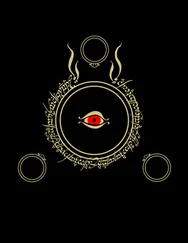



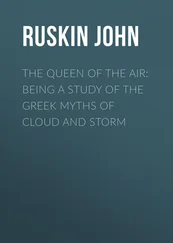
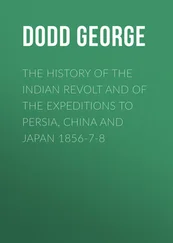
![John Bruce - The Lettsomian Lectures on Diseases and Disorders of the Heart and Arteries in Middle and Advanced Life [1900-1901]](/books/749387/john-bruce-the-lettsomian-lectures-on-diseases-and-disorders-of-the-heart-and-arteries-in-middle-and-advanced-life-1900-1901-thumb.webp)

